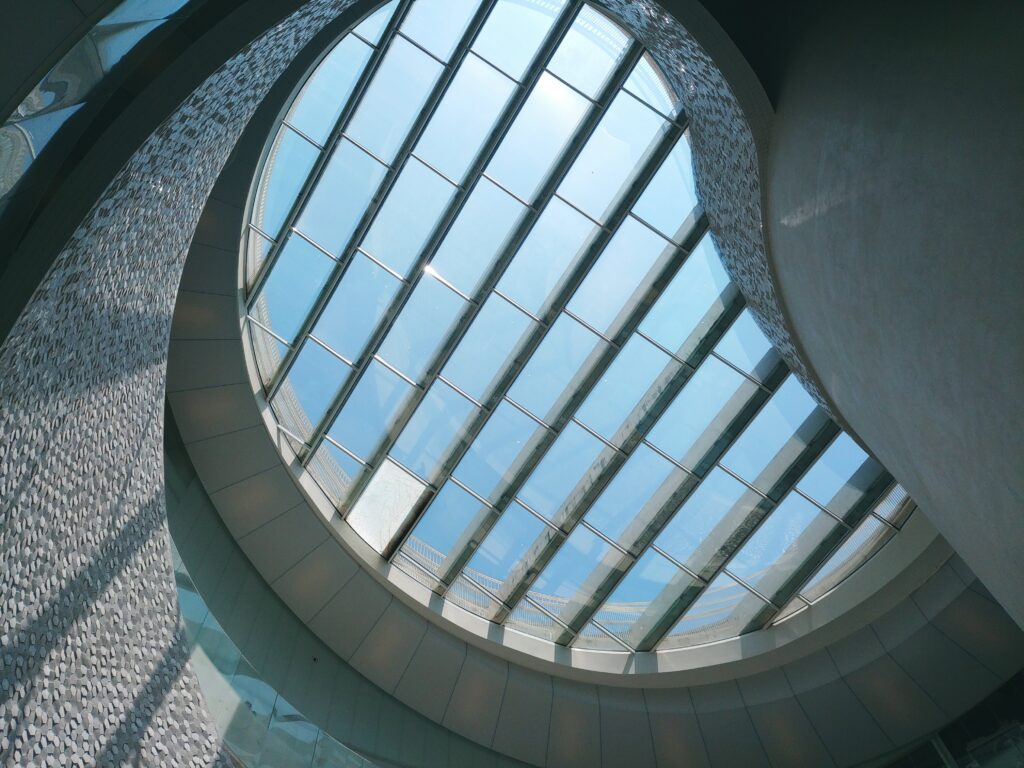
Skylights are a popular architectural feature that brings natural light into interior spaces, enhances aesthetics, and provides a sense of openness. However, like any building component, skylights can encounter problems over time. Understanding the common issues associated with skylights is important for homeowners and building owners to address and maintain these features effectively. In this article, we will explore some common problems with skylights.
- Leaks: One of the most common issues with skylights is water leakage. Skylights are exposed to the elements, making them susceptible to leaks, especially if they are improperly installed, have damaged flashing, or have deteriorated sealants. Leaks can cause water damage to the surrounding areas, leading to rot, mold growth, and structural issues. Regular inspection and maintenance can help identify and address potential sources of leaks.
- Condensation: Condensation can occur on the interior surface of skylights, particularly in areas with high humidity levels or inadequate ventilation. It is more likely to happen during cold weather when warm indoor air meets the cooler glass surface. Excessive condensation can lead to water damage and mold growth. Proper ventilation and the use of moisture barriers can help mitigate condensation issues.
- Cracked or Damaged Glass: Skylights are exposed to various external forces, such as hail, falling branches, and extreme weather conditions, which can cause cracks or damage to the glass. Additionally, improper installation or inadequate structural support can lead to stress on the glass, resulting in cracks over time. Cracked or damaged glass not only compromises the aesthetic appeal of the skylight but can also lead to water leakage and decreased energy efficiency.
- Heat Gain and Loss: Skylights, while providing natural light, can also contribute to heat gain and loss. During hot summers, skylights can allow excessive heat to enter the building, making it more difficult to cool the space. In colder months, skylights can be a significant source of heat loss, increasing heating costs. Proper insulation and the use of energy-efficient glazing can help minimize these issues.
- Fading or Discoloration: Over time, skylight materials, particularly plastic or acrylic domes, can fade or discolor due to exposure to ultraviolet (UV) radiation. Fading can affect the appearance of the skylight and reduce its ability to transmit natural light effectively. Regular cleaning and the use of UV-protective coatings can help prevent fading and discoloration.
- Poor Installation: Improper installation is a common problem that can lead to a range of issues with skylights. Incorrect flashing, inadequate sealing, or insufficient structural support can result in water leaks, drafts, and compromised stability. It is crucial to hire experienced professionals for skylight installation to ensure proper techniques and adherence to building codes.
- Lack of Maintenance: Like any building component, skylights require regular maintenance to keep them in optimal condition. Neglecting routine maintenance can exacerbate existing problems and increase the likelihood of new issues. Regular cleaning, an inspection of seals and flashing, and addressing any signs of damage promptly can help extend the lifespan of skylights and prevent costly repairs down the line.
- Noise Transmission: Some skylights, particularly those with single-pane glass or insufficient sound insulation, may allow noise transmission from the outside into the interior space. This can be a concern in areas with high noise levels, such as near busy roads or airports. Opting for skylights with double or triple glazing and proper sound insulation can help minimize noise transmission.
To mitigate these common problems with skylights, consider the following tips:
- Choose high-quality skylights from reputable manufacturers.
- Ensure professional installation by experienced contractors.
- Regularly inspect the skylights for signs of damage or wear.
- Clean the skylights and keep the surrounding areas free from debris.
- Address any leaks or damage promptly to prevent further issues.
- Consider upgrading to energy-efficient glazing and insulation options.
- Maintain proper ventilation and moisture control in the building.
- Follow the manufacturer’s guidelines for maintenance and cleaning.
By being aware of these common problems and taking proactive measures, homeowners and building owners can enjoy the benefits of skylights while minimizing potential issues. Regular maintenance, proper installation, and attention to detail are key to maintaining functional and visually appealing skylights for years to come.
